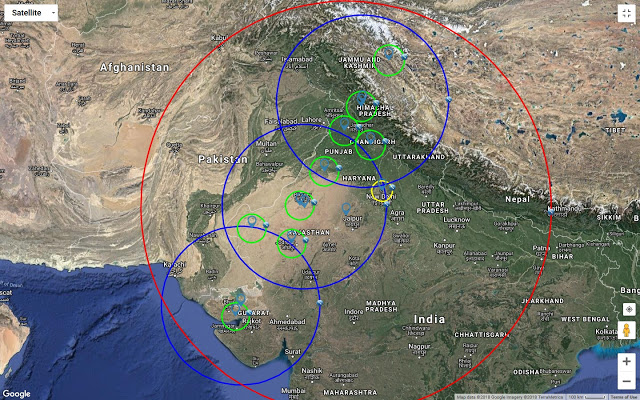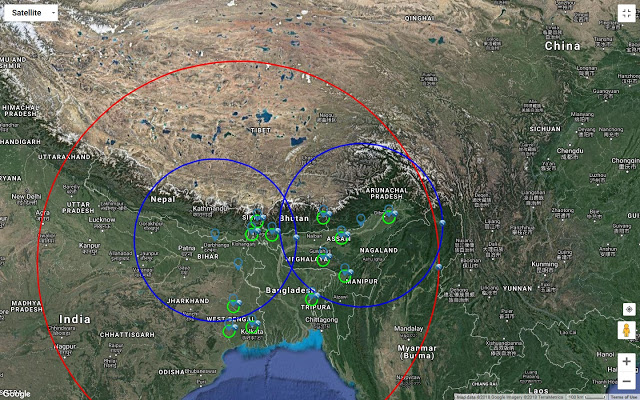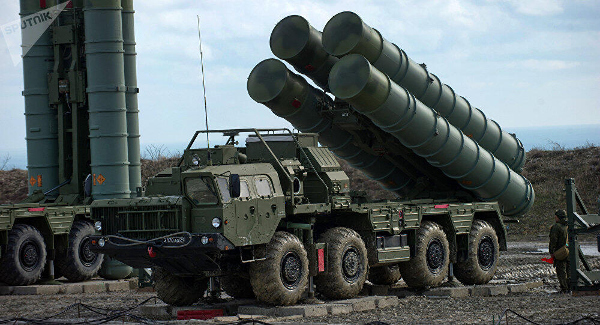“If we lose the war in the air we lose the war and lose it quickly“- n Field Marshall Bernard Montgomery
The slumbering defense establishment of India was jolted awake on December 17, 1995 when a Russian AN-26 plane with a Latvian crew and passengers that included a British arms dealer and a Danish smuggler flew over West Bengal, dropped 2,500 AK-47 rifles and 1,500,000 rounds of ammunition over five villages in the Purulia district and flew off to Thailand. Though these men were later arrested when they attempted to fly a return flight to Europe using Indian airspace, the very fact that a slow lumbering cargo plane had managed to airdrop such a large cache of weapons without getting detected by Indian air force units was a wakeup call to the military & a massive embarrassment for the Indian air force & the then INC India govt under PV Narasimha Rao.
The massive gap in air defense & Radar that the Purulia arms drop exposed meant that our shield was broken & that if India had to enter into a major conflict large swathes of territory would be free game for enemy aircraft to come & go at will. This was the catalyst that kick started a multi decade long plan to upgrade & augment the Radar Detection & SAM interdiction capabilities of the IAF. The first thing done was to look at improving and augmenting the radar coverage; the INDRA radar developed by the LRDE (Electronics & radar development establishment) in the 1980’s was upgraded to the INDRA 2 & deployed. India also approached Israel with a proposal to buy multiple units of the Arrow Anti-ballistic missile defence system in 1999. A purchase of the entire system was denied by the US which was a major partner in the project , however India did managed to procure two units of the “Green Pine” High power AESA Radar from Israel. These initial steps have now given rise to the Indigenous “Swordfish “AESA that lies at the core of our BMD. One unit of the Swordfish has been deployed as per media reports dated 2015. The LRDE also developed the ROHINI 3D Central acquisition radar which is currently under acquisition.
In 2010 the Indian air force formally inaugurated operations of the AFNET & IACCS. This system was in development or over a decade & now interlinks all civilian and military radars including AWACS to provide air defence commanders with a real time multi layered picture detailing civilian and military aircraft movement throughout India & much of the subcontinent as well. The Indian Air Force has already established 5 IACCS nodes in the western sector facing Pakistan at Barnala (Punjab), Wadsar (Gujarat), Aya Nagar (Delhi), Jodhpur (Rajasthan) and Ambala (Haryana). Four new major nodes and 10 new sub-nodes are in the process of being raised under Phase-II of the IACCS project. While 3 nodes will be deployed in eastern, central and southern India, the fourth is meant for the strategically-located Andaman and Nicobar Islands archipelago in the Bay of Bengal, watching over Malacca Strait.
While augmenting its surveillance capabilities the IAF was well aware that it had only resolved part of the puzzle, the question of interdiction of any hostile aircraft these radars would detect would mean newer and better air defence missiles & guns would be required as well. The workhorse of the IAF Sam fleet then was the SA-3 Gammon which with its 35km range was simply outclassed by the 4&4+ Gen aircraft then being acquired by our opposition. The IAF then embarked on a plan to develop & acquire an entirely new series of SAMs more suited to modern combat which led to the Akash program being sped up. The Indian military also acquired the SPYDER LLQRM from Israel while ordering AKASH SAM units from BDL. A national BMD development program was also started by DRDO alongside JV programs for air defense missiles with MBDA of Europe and IAI OF Israel. The Israeli JV developed the MRSAM system 18 units of which are currently on order. While these entire Surface to Air missile programs would be able to intercept airborne threats at the medium to short range the lack of capability for a long range intercept was still present. The option of the S400 was brought in to counter this deficiency.
In October 2015 India formally announced an intention to purchase the S400 system from Russia as a direct deal, though the initial requirement for 12 such systems was pared down to only 5 on account of costs. On 05/10/2018 Prime Minister Modi of India and President Putin of Russia signed in a deal that will see Russia supply 5 units of the strategic Air defense missile system S400 delivered to India for use by the Indian Air Force starting 2020. This system along with the BARAK 8 (deliveries from 2020) will in many ways usher in a paradigm shift for the IAF which till date has utilized surface to air missiles as mere point and area defense weapons with maximum ranges of engagement from 18 to 45km. There is some information from CASIS about a possible transfer to India of two S200 class 150km ranged missile systems in 1989 but without official acknowledgement it is safe to assume the IAF cannot engage airborne targets form the ground at greater than 45km ranges as on date.
The S400 system will give the SAM crews in the IAF “strategic” reach & for the first time allow a SAM system to be used as an offensive asset instead of a simple defensive weapon. This will mean that now a SAM crew sitting in Ambala will be able to kill a ZDK-03 AWACS or an IL-78 tanker of the PAF flying over Islamabad if called upon to do so using the 40N6 missile. However the 40N6 is a strategic weapon & will not be used regularly. The 48N6, 9M96E2 &9M96E missiles of the S400 will be the workhorse missiles & do most of the heavy lifting defending Indian airspace from arrange of 40-240km.
The S400 system coupled with the “SWORDFISH” BMD radar and AAD+PAD combo will also give India a multi layered anti-ballistic missile defence capability & should form the core of our national Air defence for a number of decades to come. This formidable system will be the tip of the sword for the IAF air defense and the longest ranged anti-aircraft asset in a multilayered air defense network comprising of the indigenous BMD system, S400, MRSAM, AKASH & SPYDER apart from older assets like the SA-3 & OSA SAM systems. Apart from recent media reports about the possible acquisition of an American NASAMS2 system an indigenous QRSAM & LRSAM called XRSAM are in the works as well. India is also upgrading its entire arsenal of AAA guns with modern fire control radar & electro -optical target acquisition systems.
It is safe to say that with the acquisition of the S400 we are close to achieving the near zero gap air defence coverage which we had planned for since the 1990’s Purulia airdrop Incident. Our skies have never been this secure.

1) 1x Swordfish LRTR based between Jaipur & Delhi (Red Circle)
2) 3x S400 batteries based close to Bhuj, Bikaner & Dharamsala(Blue Circles)
3) 9x BARAK-8 MRSAM batteries based close to Kandla, Jodhpur, Jaisalmer, Sirsa, Bikaner, Jalandhar, Chandigarh, Dharamsala & Leh.(Green Circles)
4) 1x NASAMS 2 battery based in Delhi (Yellow Circle)

5) 1x Swordfish LRTR based close to Sahibganj (Red Circle)
6) 2x S400 batteries based close to Jorhat & Darbhanga(Blue Circles)
7) 12x AKASH SRSAM batteries based close to Kolkata, Durgapur, Kharaghpur, Silchar, Shillong, Siliguri, Gangtok, Hashimara, Tawang, Tezpur & Tinsukhia.
Author: Soumik (Twitter :Twitter.com/aryanwarlord)
You may also like
-
IAF Aircraft Set Course For Exercise Eastern Bridge VII At Oman
-
IAF Set To Host The Indian Defence Aviation Exposition-II At Jodhpur
-
Defence Secretary to co-chair 5th India-Philippines Joint Defence Cooperation Committee meeting in Manila
-
Simultaneous Launch Of ‘malpe And Mulki’, Fourth And Fifth Ships Of Asw Swc (Csl) Project
-
Aatmanirbharta in Defence: MoD signs Contract with HAL for 240 AL-31FP Aero Engines for Su-30MKI Aircraft
